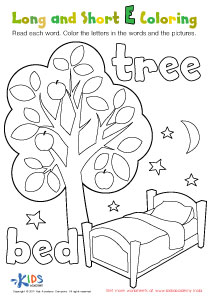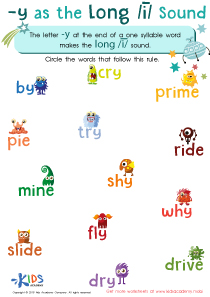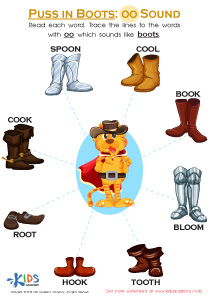Normal Middle Vowel Worksheets for Ages 4-8
4 filtered results
-
From - To
Our Normal Middle Vowel Worksheets are perfect for kids ages 4-8 to practice and improve their reading and writing skills. These engaging, age-appropriate worksheets help young learners identify and use middle vowels in words, enhancing their phonics and spelling abilities. Ideal for classroom use or at-home practice, our printable worksheets combine fun and learning through activities, colorful illustrations, and relatable examples. Designed by education experts, they ensure a solid foundation in literacy, giving your child the tools they need to succeed. Explore our collection to support your child’s phonemic awareness and boost their confidence in reading and writing.
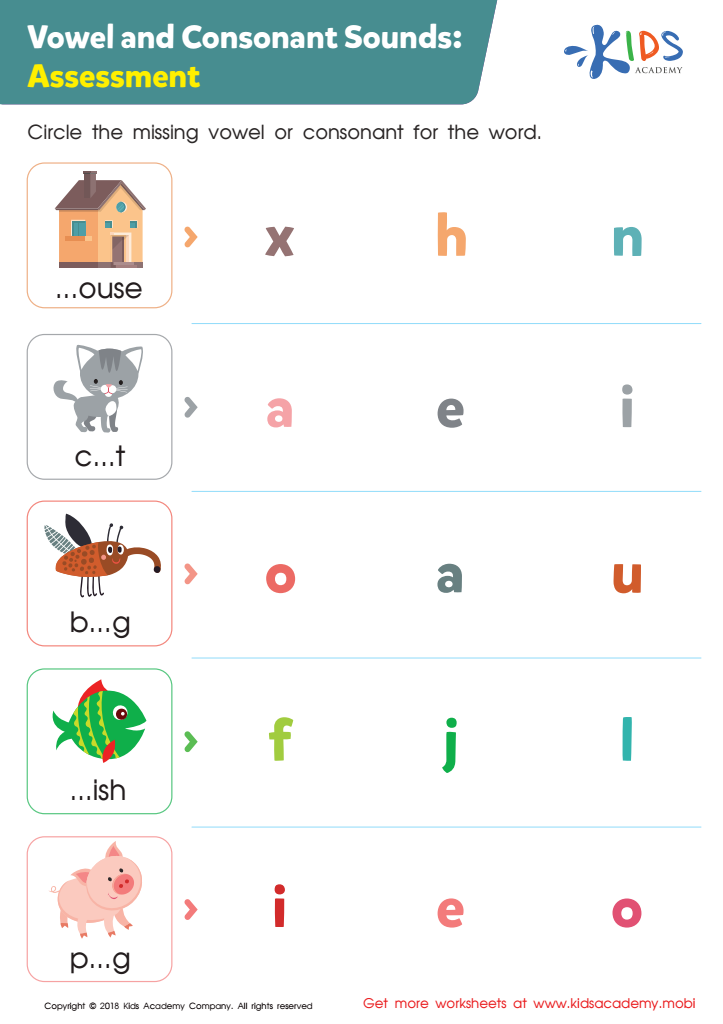

Vowel and Consonant Sounds: Assessment Worksheet
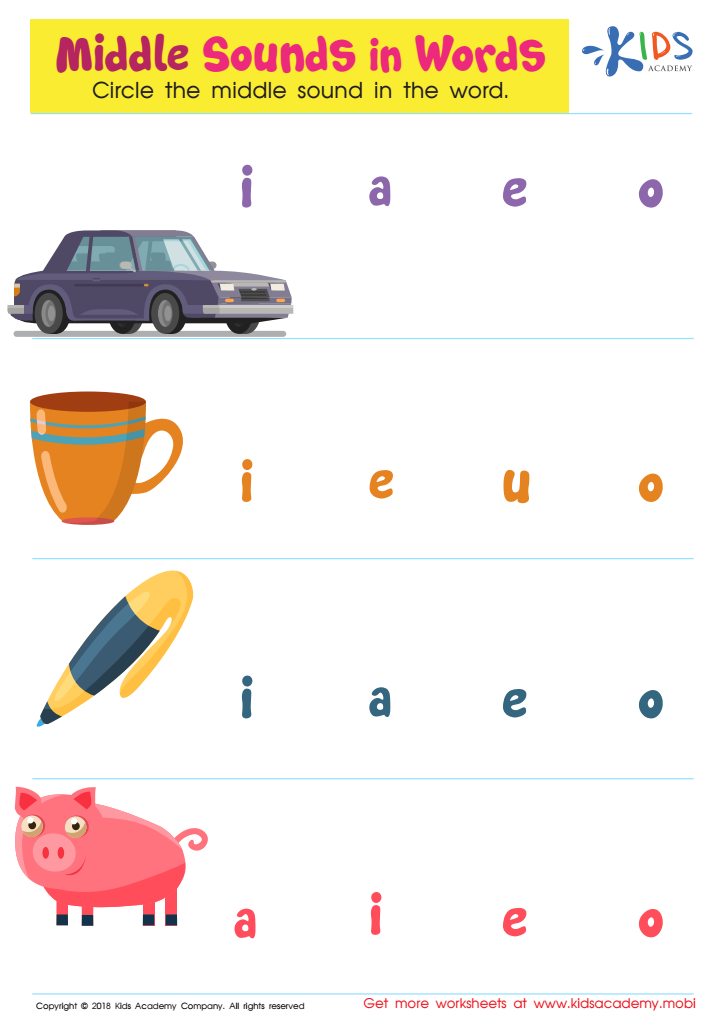

Middle Sounds in Words Worksheet
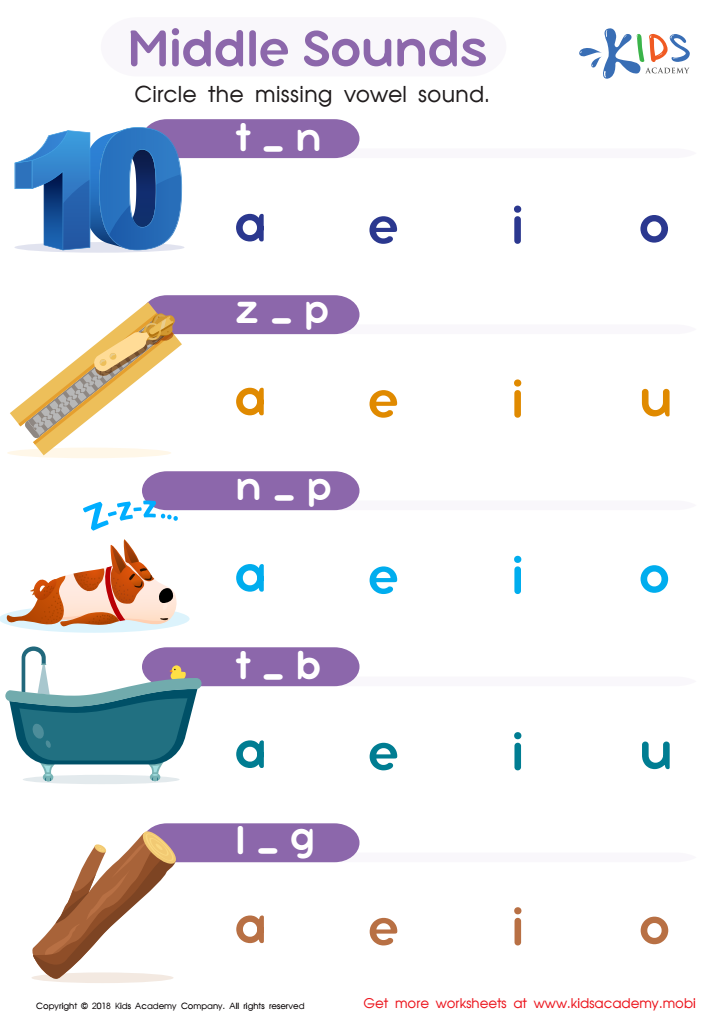

Middle Sounds Worksheet
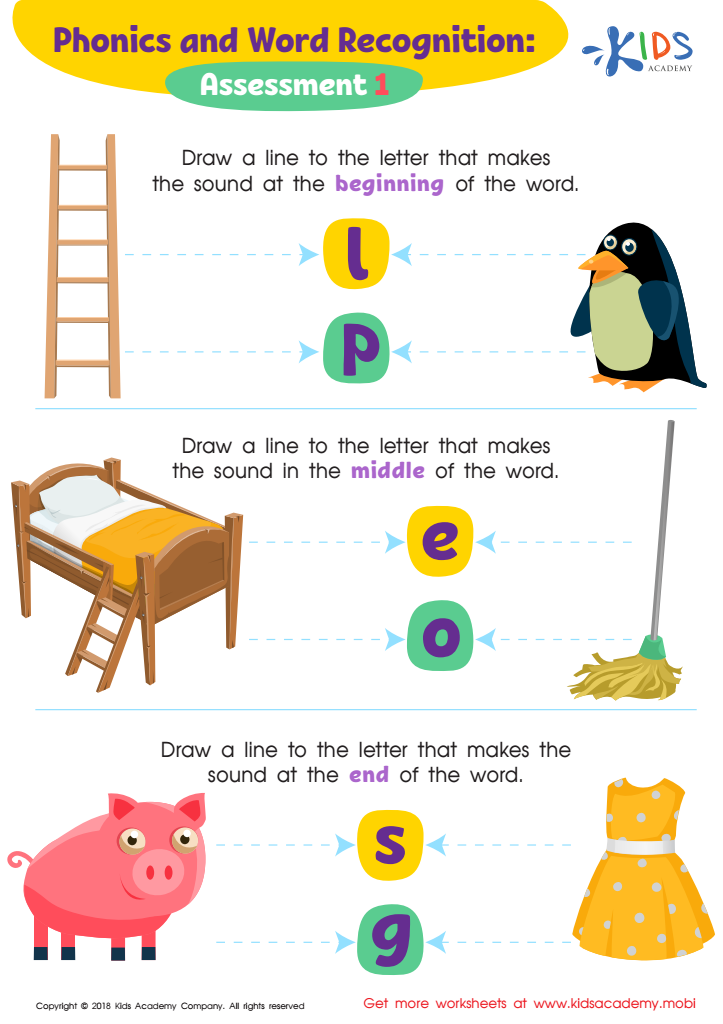

Phonics and Word Recognition: Assessment 1 ELA Worksheet
The mastery of middle vowels is an essential milestone for children aged 4-8, a period marked by rapid language and literacy development. Parents and teachers should care about normal middle vowel acquisition because it is central to phonemic awareness, the ability to recognize and manipulate sounds within words. This phonemic awareness underpins reading and spelling skills, crucial components of early education.
Middle vowels often present a particular challenge because they can sound quite similar, making them harder for young learners to distinguish and articulate accurately. Consistent exposure and practice help solidify understanding and use of these sounds. Fostering accurate vowel use at this stage can thus prevent confusion and the formation of improper reading habits, which are more difficult to correct later.
Moreover, proficiency with middle vowels contributes to clearer communication. Children who can correctly use and identify these sounds will read more fluently and comprehend text more effectively. Consequently, this boosts their confidence, participation in class activities, and curiosity about learning new words and concepts. Engaging methods, such as songs, games, and reading activities, can make the mastery process enjoyable. Thus, a focus on normal middle vowels equips children with strong, foundational literacy skills paving the way for future academic success.

 Assign to the classroom
Assign to the classroom



